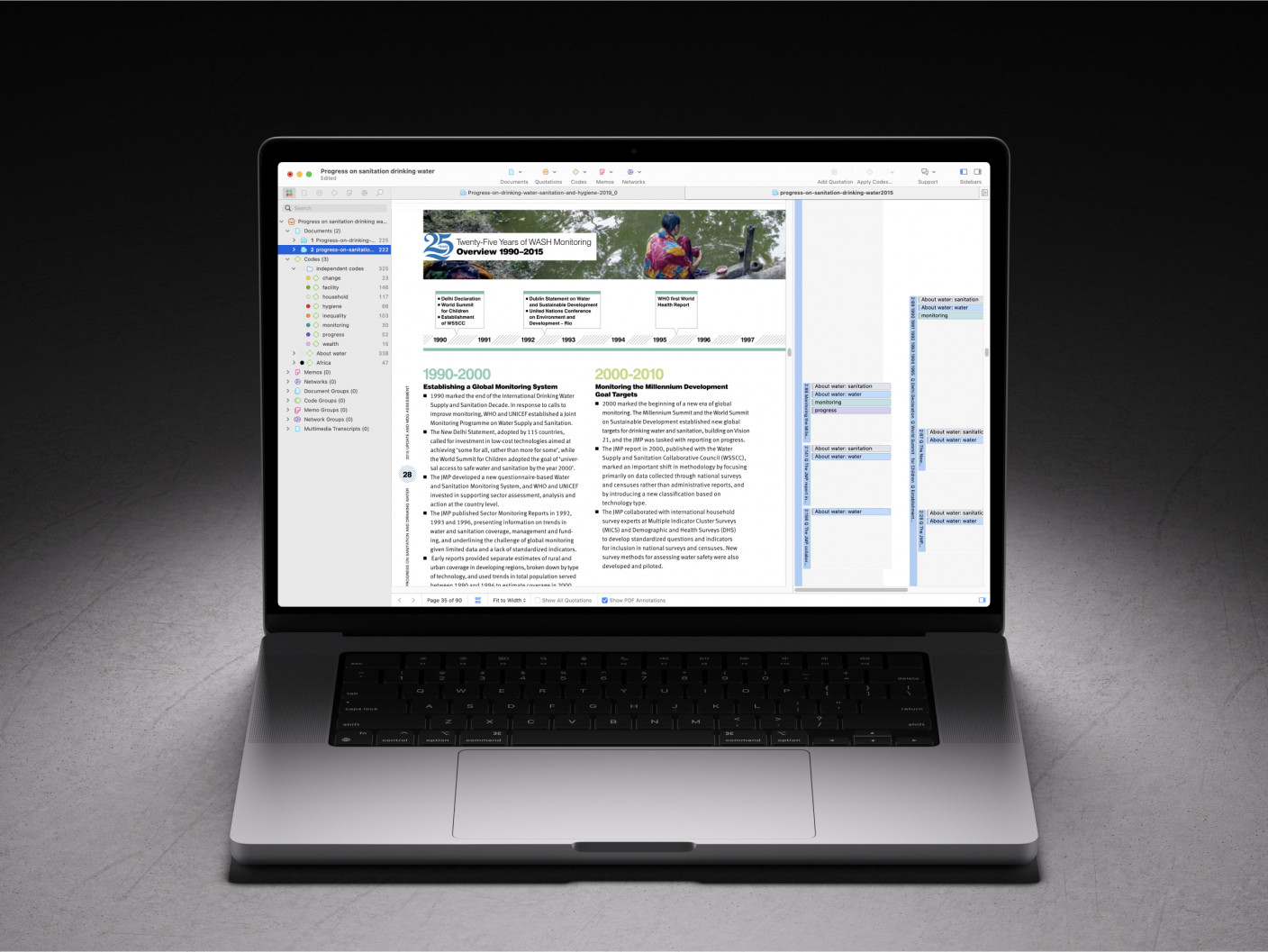- What is Mixed Methods Research?
- Advantages of Mixed Methods Research
- Challenges in Mixed Methods Research
- Common Mistakes in Mixed Methods Research
- Mixed Methods Research Paradigms
- Validity & Reliability in Mixed Methods Research
- Ethical Considerations in Mixed Methods Research
- Mixed Methods vs. Multiple Methods Research
- Mixed Methods Research Designs
- How to Choose the Right Mixed Methods Design
- Convergent Parallel Design
- Explanatory Sequential Design
- Exploratory Sequential Design
- Embedded Mixed Methods Research Design
- Transformative Mixed Methods Design
- Multiphase Mixed Methods Research Design
- How to Conduct Mixed Methods Research
- Sampling Strategies in Mixed Methods Research
- Data Collection in Mixed Methods Research
- Triangulation in Mixed Methods Research
- Data Analysis in Mixed Methods Research
- How to Integrate Quantitative & Qualitative Data?
- How to Interpret Mixed Methods Research Findings?
- Software Tools for Mixed Methods Data Analysis
- How to Write a Mixed Methods Research Proposal
- How to Write a Mixed Methods Research Paper?
- Reporting Results in Mixed Methods Research
- Mixed Methods Research Examples
- How to cite "The Guide to Mixed Methods Research"
Explanatory Sequential Mixed Methods Design
Explanatory sequential design in mixed methods research involves quantitative data analysis in an initial phase followed by a qualitative phase that explains the quantitative results in more depth. In this article, we will explain the background, procedure, benefits, and challenges of the design along with some examples and key studies.

Introduction
As a mixed methods design, an explanatory sequential design harnesses both quantitative and qualitative data, but it is distinguished by two phases: first quantitative data is collected and analyzed, and then qualitative data is collected and analyzed. The purpose of this design is to elaborate on the quantitative findings by using qualitative methods (Creswell and Plano Clark, 2017). This design is useful when a researcher needs qualitative data to explain quantitative data such as outlier data points, unexpected results, or highly significant results. It has also been useful in research that needs quantitative data to guide purposeful sampling for a qualitative phase.
In this design, the research problem and research question are more quantitatively oriented, with a clear understanding of the important variables and access to quantitative instruments for measuring the primary constructs of interest. Additionally, the researcher can return to participants for a second round of qualitative data collection if necessary. With this design, the researcher can use the quantitative results to develop new questions that require qualitative methods to dig deeper into the quantitative insights.
Philosophical assumptions of the explanatory sequential design
The philosophical assumptions behind an explanatory mixed methods design demonstrate flexibility and adaptability, shifting to meet the requirements for the quantitative and qualitative data. The design begins with a quantitative phase, rooted in postpositivism, which emphasizes objective measurement and hypothesis testing. This phase focuses on observable and measurable phenomena, employing instruments to collect data, measure variables, and analyze statistical results. Researchers aim to identify causal relationships, test theories, and establish findings that are generalizable. This approach aligns with the belief that empirical evidence forms the foundation of knowledge.
When transitioning to the qualitative phase, the philosophical stance shifts to constructivism, which values subjective understanding and in-depth exploration. In this phase, researchers aim to provide context and deeper insight into the quantitative results. The qualitative phase prioritizes understanding participants’ perspectives and the meanings they assign to their experiences, reflecting the complexity of social interactions. This perspective acknowledges that reality is socially constructed and shaped through individual and collective interactions within specific contexts.
The explanatory design embodies philosophical pluralism, allowing researchers to adopt different paradigms for distinct phases of the study. Postpositivism is employed for the quantitative research phase to ensure precision and generalizability, while constructivism guides the qualitative research phase to offer rich, contextualized insights. This shifting of assumptions aligns with pragmatism, a broader framework often associated with mixed methods research. Pragmatism emphasizes practical problem-solving, encouraging researchers to use methods and paradigms that best address the research questions, regardless of strict philosophical boundaries.
How to do an explanatory sequential design?
The explanatory sequential design is implemented in distinct phases, starting with the quantitative phase which will be further explained by qualitative data.
- Design quantitative strand: Begin by formulating a clear quantitative research question and selecting an appropriate quantitative approach that aligns with the study objectives. Next, identify and recruit a representative quantitative sample.
- Collect and analyze quantitative data: Qualitative data is often collected through surveys, experiments, or large-scale datasets, to identify patterns, relationships, or anomalies. The primary goal of this phase is to provide a broad understanding of the research problem, generate statistical trends, or test specific hypotheses. The results are analyzed to highlight key findings, such as unexpected patterns or significant differences between groups, which can guide the next qualitative research phase.
- Design qualitative strand: After the quantitative data analysis has been done, the next step is to determine which quantitative findings will be further explored in the qualitative study. These can include significant or nonsignificant results, outliers, or group differences. The quantitative study can also inform the design of questions for qualitative interviews or online surveys, as well as shape which participants will be selected for the sample.
- Qualitative data collection and analysis: The quantitative findings inform the qualitative data collection. In this phase, a researcher must once again obtain written permission and consent from participants, especially if employing methods such as semi-structured interviews, focus groups, or open-ended questionnaires. A researcher selects the group or sample that will help explain the quantitative results and analyzes the data using qualitative data analysis process most suitable.
- Integrate results from both phases: Researchers compare and combine insights from the analyzed qualitative and quantitative data. This process involves identifying connections between the two datasets and synthesizing the findings into a cohesive narrative. The goal is to discuss to what extent and in what ways the qualitative data explains the quantitative findings.
Advantages of explanatory sequential designs
- Appeals to quantitative researchers: Begins with a strong quantitative orientation, making it easier to analyze numerical data before incorporating qualitative insights.
- Straightforward and efficient structure: The two-phase design allows researchers to separate data collection and analysis into distinct stages, ensuring clarity and organization.
- Suitable for individual researchers: Data collection is sequential rather than simultaneous, making it easier to manage without the need for a large research team.
- Does not require a research team: Unlike convergent designs, this method allows a single researcher to conduct the study without coordinating multiple data collection efforts at once.
- Simplifies report writing and presentation: Findings are structured logically, with quantitative results presented first, followed by qualitative insights that provide deeper explanations.
- Supports emergent research approaches: Researchers can adapt the qualitative phase based on initial quantitative findings, allowing for greater flexibility in exploring new insights.
Challenges of explanatory sequential design
While this mixed methods design carries benefits, the sequential nature of this design can be time-intensive, requiring separate data collection, analysis, and interpretation phases. Here are some of the most notable challenges according to Creswell (2017).
- Time demands: Implementing the two phases can be lengthy. While the qualitative phase typically involves fewer participants, it often requires significant time for data collection and analysis. Researchers must allocate sufficient time to ensure the qualitative phase complements the quantitative findings effectively.
- Institutional Review Board (IRB) approval: Obtaining approval may pose difficulties since participant selection for the second phase often depends on the results of the initial phase. To address this, researchers may outline a tentative framework for the qualitative phase and inform participants about the possibility of further contact.
- Identifying key quantitative insights: Clarifying complex quantitative results that merit further exploration can be challenging. While researchers often determine this after completing the initial phase, planning may include prioritizing significant results and predictors.
- Sampling for the second phase: Selecting participants for the qualitative phase requires careful consideration of criteria to ensure rich explanations. This involves leveraging demographic characteristics, comparative groups from the quantitative phase, or individuals differing in predictive variables to enhance explanatory power.
Explanatory sequential design variants
Explanatory sequential design has two variants that are normally used in mixed methods studies.
The follow-up explanation variant is the most common, and it prioritizes the initial quantitative phase. It then uses the qualitative findings to explain the quantitative results.
The second variant for this design is the participant-selection variant where the researcher places a higher value on the qualitative data but needs to collect quantitative data to identify and conduct purposive sampling.
Example of an explanatory sequential design
Igo, Riccomini, Bruning, and Pope (2006) applied an explanatory sequential design with a follow-up explanation to explore how the encoding of text ideas is affected when students with learning disabilities (LD) take notes from Web-based text.
The study's quantitative phase involved 15 middle-school students, consisting of 10 in 7th grade and 5 in 8th grade, all identified with learning disabilities from a rural southeastern town. These students utilized three different note-taking methods: typing, copying and pasting, and writing. The methods ensured that each student experienced all three techniques across various topics. Following the note-taking, students were tested immediately to assess differences in encoding based on the methods used, with a delayed recall test administered four days later.
In the qualitative phase, each student participated in interviews after the testing to gather insights into their experiences and preferences regarding the note-taking methods. The aim was to explain the quantitative findings through their perspectives. Additionally, a textual analysis of the students' notes was conducted to examine their strategies and learning processes, focusing on the completeness and appropriateness of the notes taken. The qualitative data from the interviews were organized using a coding scheme to identify common themes related to the students' experiences with note-taking.
The findings revealed that students preferred the copy-and-paste method, as it alleviated anxiety related to spelling and grammar, allowing them to focus more on the content. The analysis also indicated that students often took verbatim notes, which is linked to shallow processing and poor memory performance.
The implications of the study suggest that educators should consider instructing students with learning disabilities to use copy-and-paste techniques for note-taking from Web-based sources. This approach may enhance their learning experience by reducing anxiety and improving engagement. Overall, the mixed-methods design provided a comprehensive understanding of the note-taking processes and their impact on learning for students with learning disabilities.
Conclusion
Explanatory sequential design offers a structured approach to integrating quantitative and qualitative data in mixed methods research. By beginning with a quantitative phase, researchers can establish broad trends, test hypotheses, and identify patterns that require further exploration. The subsequent qualitative phase then provides deeper insights into these patterns, helping to explain unexpected findings, refine interpretations, and add contextual understanding.
This design is particularly valuable for studies that require quantitative data to inform purposeful sampling for a qualitative phase. Its structured approach makes it accessible to researchers working individually, and its flexibility allows for emergent modifications based on initial results. However, challenges such as time constraints, Institutional Review Board approvals, and participant selection for the second phase must be carefully managed.
Ultimately, the explanatory sequential design strengthens research by offering both numerical precision and rich, detailed narratives. When implemented effectively, it enhances the depth and applicability of findings, making it a powerful tool in mixed methods research.
References
- Creswell, J. W., & Plano Clark, V. L. (2017). Designing and conducting mixed methods research (3rd ed.). SAGE Publications. ISBN: 1483346986, 9781483346984.
- Igo, L. B., Riccomini, P. J., Bruning, R. H., & Pope, G. G. (2006). How should middle-school students with LD approach online note-taking? A mixed-methods study. Learning Disability Quarterly, 29(2), 89-100.


